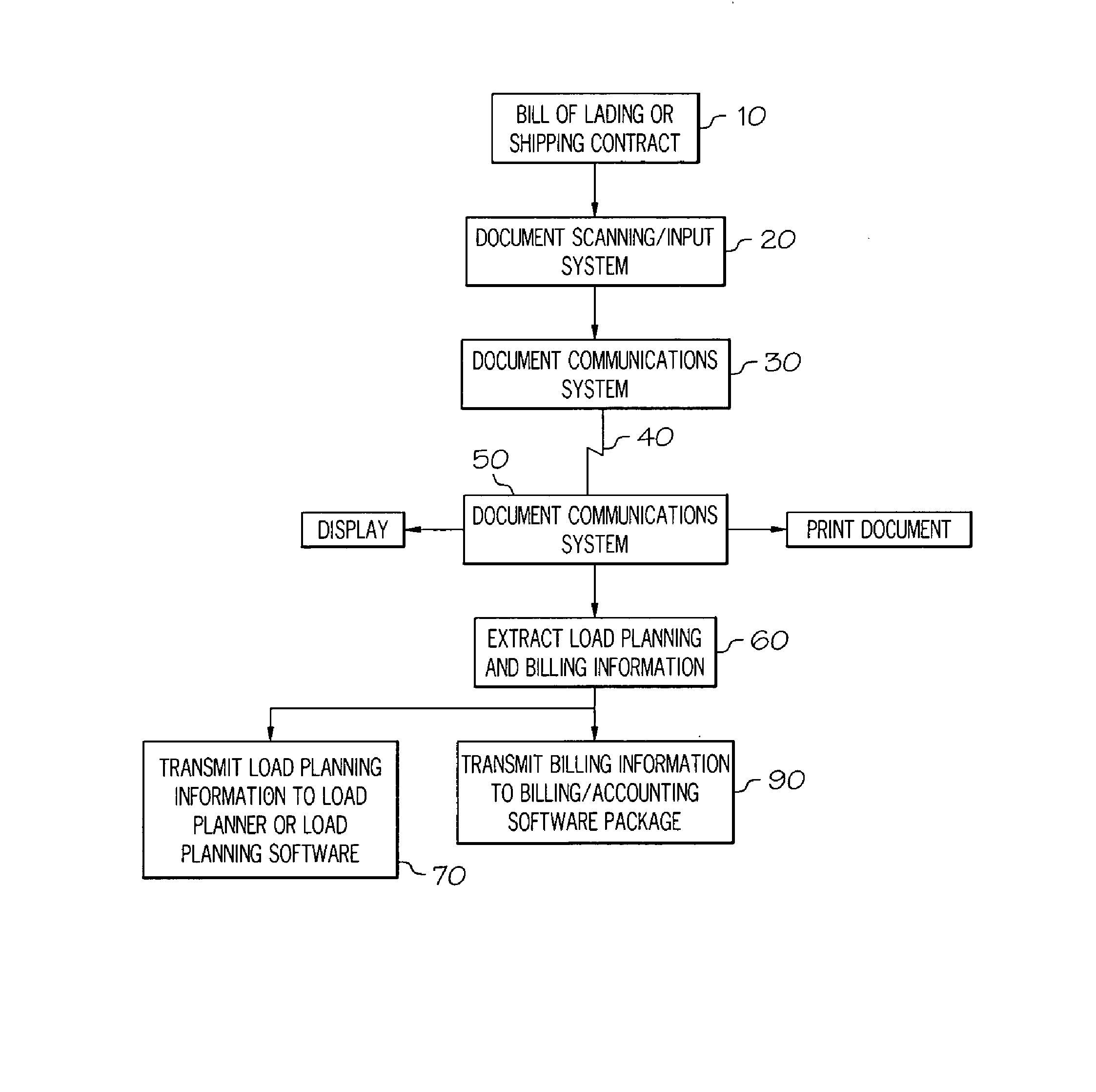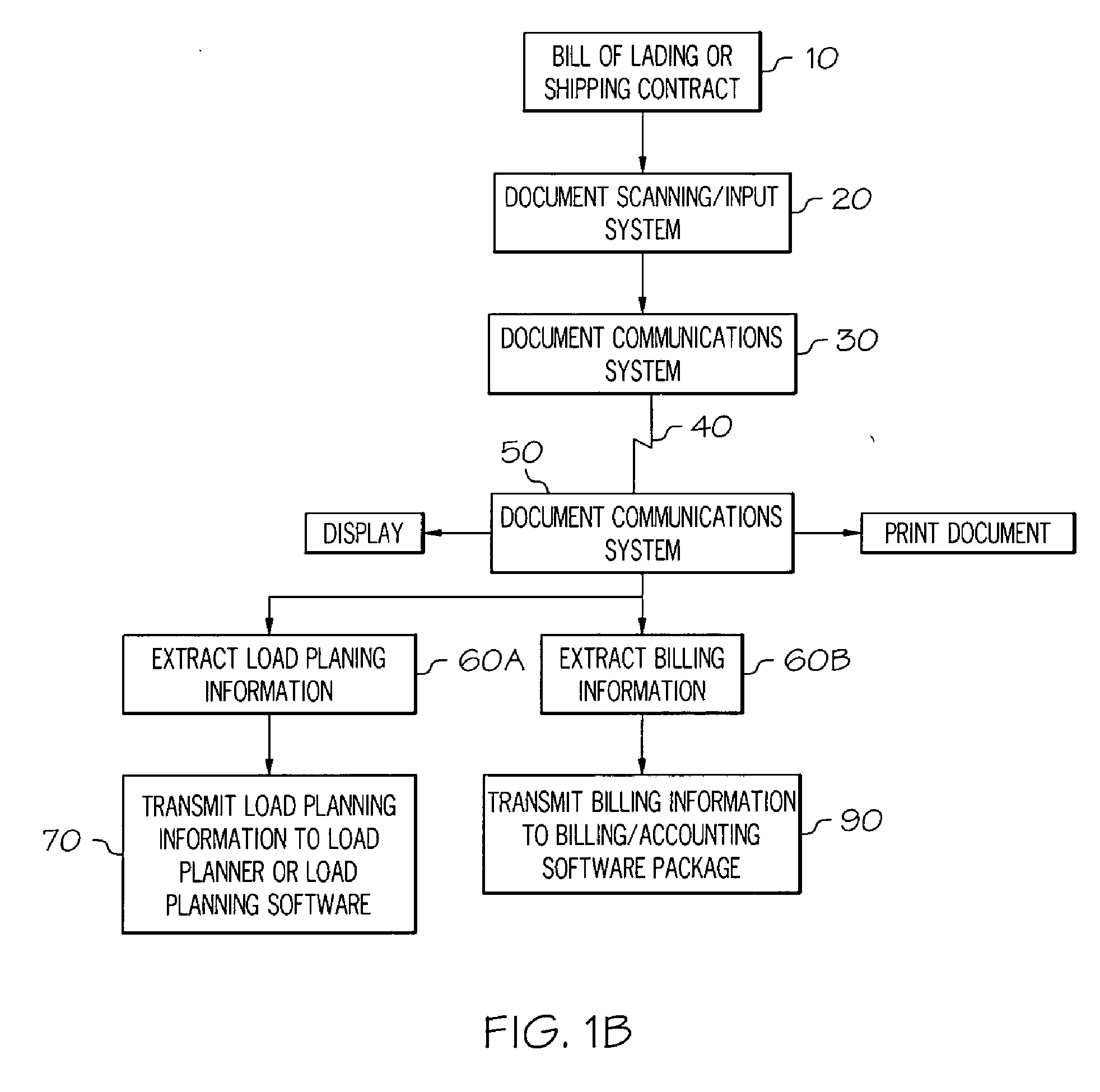Bill of Lading Transmission and Processing System for Less Than a Load Carriers
a technology of transmission and processing system and load carrier, which is applied in the direction of data switching network, instrument, wireless commuication services, etc., can solve the problems of reducing efficiency, increasing costs, and reducing profits of trucking companies, so as to reduce freight turn-around time and cost
- Summary
- Abstract
- Description
- Claims
- Application Information
AI Technical Summary
Benefits of technology
Problems solved by technology
Method used
Image
Examples
Embodiment Construction
[0021]FIG. 1A illustrates a bill of lading transmission and processing system for less-than-a-load (LTL) carriers in accordance with the present invention. The bill of lading transmitting and processing system 10 comprises scanning a document using a scanning / input system 20, initiating a document transmission using a communication system (transmitter) 30, establishing a connection using a communications link 40, receiving a document using a communications system (receiver) 50, extracting the load planning and billing information 60 from a transmitted electronic bill of lading, transmitting or sharing the load planning information with a load planner or load planning software 70, and transmitting or sharing the billing information extracted from the electronic bill of lading with a billing or accounting software package 90. The illustrated system is designed so that a truck driver, while en route, can transmit a bill of lading received from a customer to a central processing locatio...
PUM
 Login to View More
Login to View More Abstract
Description
Claims
Application Information
 Login to View More
Login to View More - R&D
- Intellectual Property
- Life Sciences
- Materials
- Tech Scout
- Unparalleled Data Quality
- Higher Quality Content
- 60% Fewer Hallucinations
Browse by: Latest US Patents, China's latest patents, Technical Efficacy Thesaurus, Application Domain, Technology Topic, Popular Technical Reports.
© 2025 PatSnap. All rights reserved.Legal|Privacy policy|Modern Slavery Act Transparency Statement|Sitemap|About US| Contact US: help@patsnap.com



